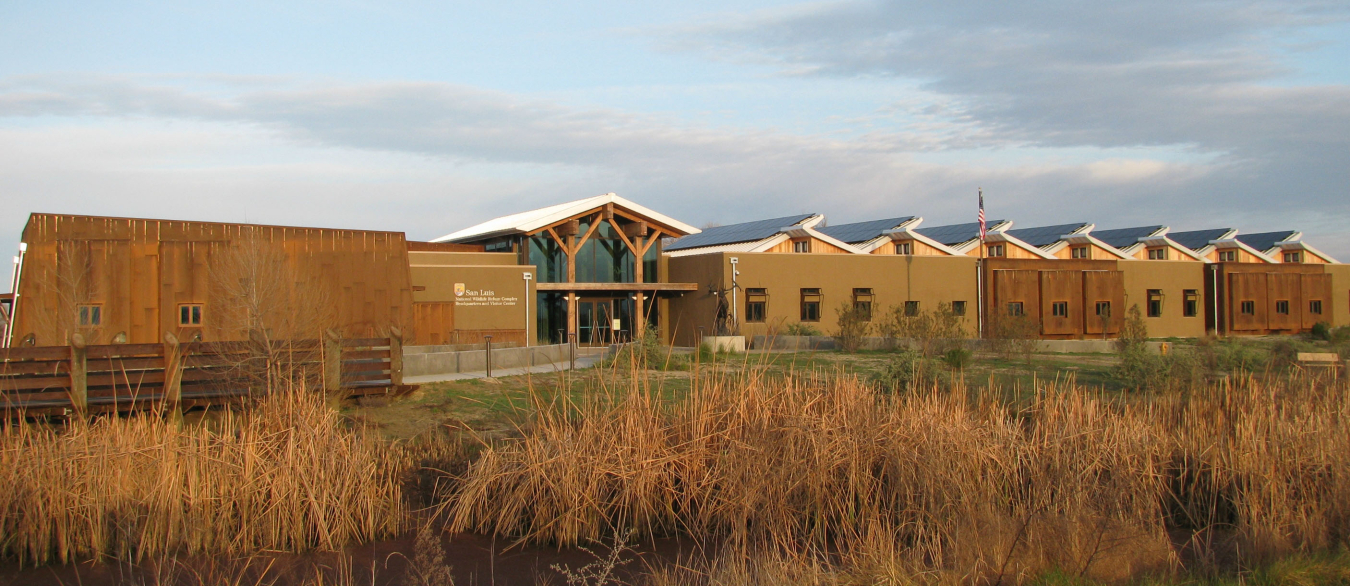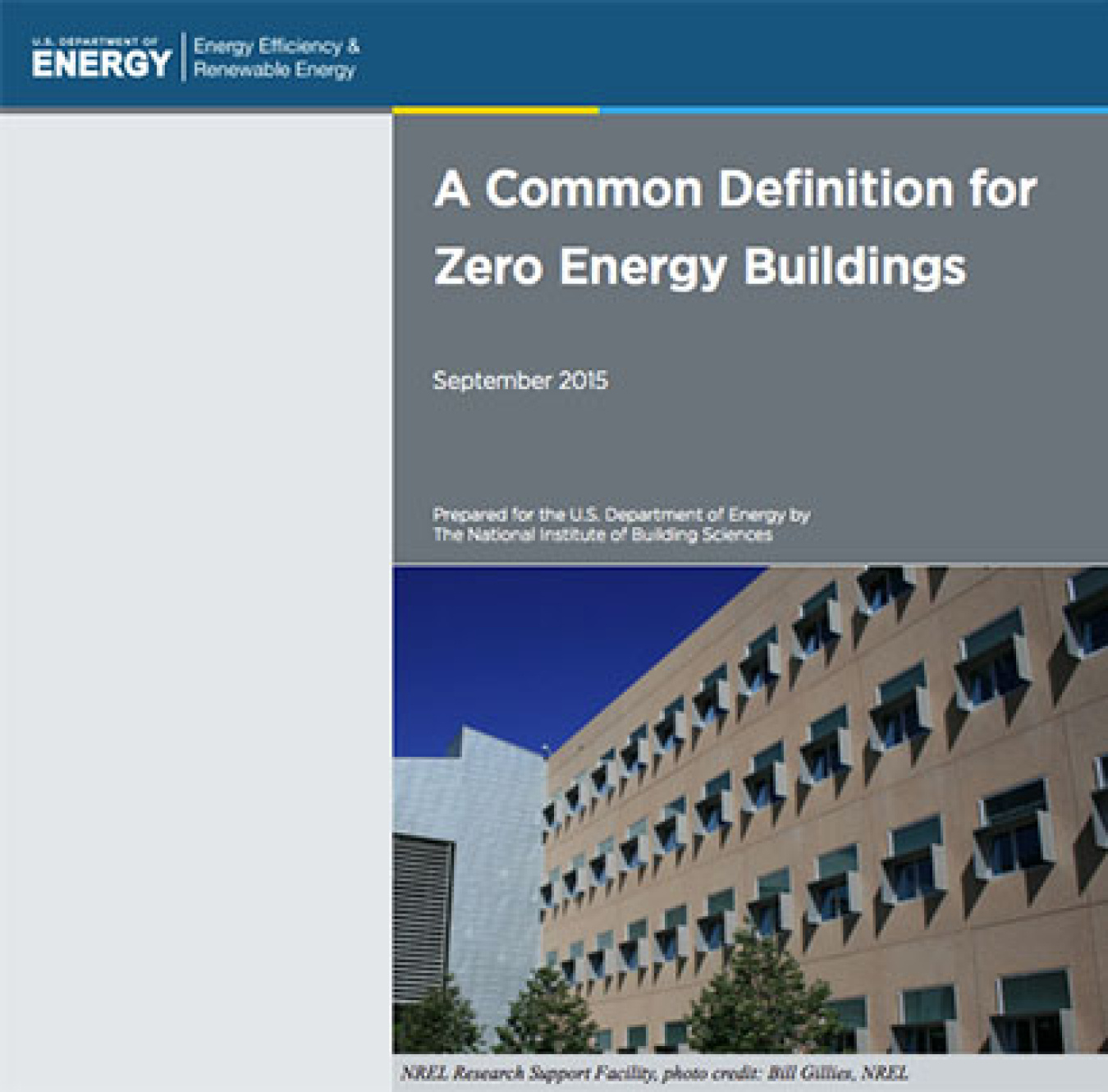
The U.S. Fish and Wildlife Service completed its first low or zero energy Leadership in Energy and Environmental Design Platinum-certified building in fiscal year 2012 at San Luis National Wildlife Refuge Complex.
Low or zero energy, water, and waste buildings and campuses are a growing target in the federal sector. The Federal Energy Management Program (FEMP) developed three handbooks that feature strategies to help agencies plan, design, and construct low or zero energy, water, and waste facilities and campuses.
A low or zero energy federal building (constructed, renovated, or existing) is operated to:
- Maximize energy efficiency
- Implement energy recovery opportunities where feasible
- Balance the actual annual source energy consumption with on-site energy generation.
A low or zero water federal building (constructed, renovated, or existing) is operated to:
- Minimize total water consumption
- Maximize alternative water sources
- Minimize wastewater discharge from the building
- Return water to the original water source such that the annual water consumption is equivalent to the alternative water use plus water returned to the original source over the course of a year.
A low or zero waste federal building is operated to:
- Reduce, reuse, recycle, compost, or recover solid waste streams (with the exception of hazardous and medical waste) thereby resulting in no waste disposal to landfills or incinerators.
Learn More
Read the Federal New Buildings Handbook for Net Zero Energy, Water, and Waste.
A low or zero energy federal building (constructed, renovated, or existing) is operated to:
- Maximize energy efficiency
- Implement energy recovery opportunities where feasible
- Balance the actual annual source energy consumption with on-site energy generation.
A low or zero water federal building (constructed, renovated, or existing) is operated to:
- Minimize total water consumption
- Maximize alternative water sources
- Minimize wastewater discharge from the building
- Return water to the original water source such that the annual water consumption is equivalent to the alternative water use plus water returned to the original source over the course of a year.
A low or zero waste federal building is operated to:
- Reduce, reuse, recycle, compost, or recover solid waste streams (with the exception of hazardous and medical waste) thereby resulting in no waste disposal to landfills or incinerators.
Learn More
Read the Federal Existing Buildings Handbook for Net Zero Energy, Water, and Waste.
A low or zero energy federal campus:
- Reduces overall energy use
- Maximizes efficiency
- Implements energy recovery and cogeneration opportunities
- Offsets the remaining demand with the production of energy from on-site sources so the campus produces as much energy as it uses over the course of a year.
A low or zero water federal campus:
- Minimizes total water consumption
- Maximizes alternative water sources
- Minimizes wastewater discharge
- Returns water to the original water source such that the annual water consumption is equivalent to the alternative water use plus the water returned to the original water source over the course of a year.
A low or zero waste federal campus:
- Reduces, reuses, recycles/composts, and recovers solid waste streams (with the exception of hazardous and medical waste), converting them to resource values, resulting in no waste disposal to landfills or incinerators.
Learn More
Read the Federal Campuses Handbook for Net Zero Energy, Energy, Water, and Waste.

FEMP's three handbooks focus on applying the methodology presented in A Common Definition to Zero Energy Buildings, which addresses buildings owned by the federal government and have federal employees as occupants.
Federal energy, water, and waste management has typically focused on minimizing use first then looking for alternatives to achieving the low or zero target. Many energy, water, and waste goals are in place to drive the federal sector toward reducing consumption first, then encourage alternative paths to reducing resource use, impact, and costs.
A Common Definition to Zero Energy Buildings offers strategies that are in support of, but are not intended to replace, substitute, or modify any statutory or regulatory requirements and mandates.
See Low or Zero Water Building Strategies for additional information about how to design and implement low to zero water buildings.

